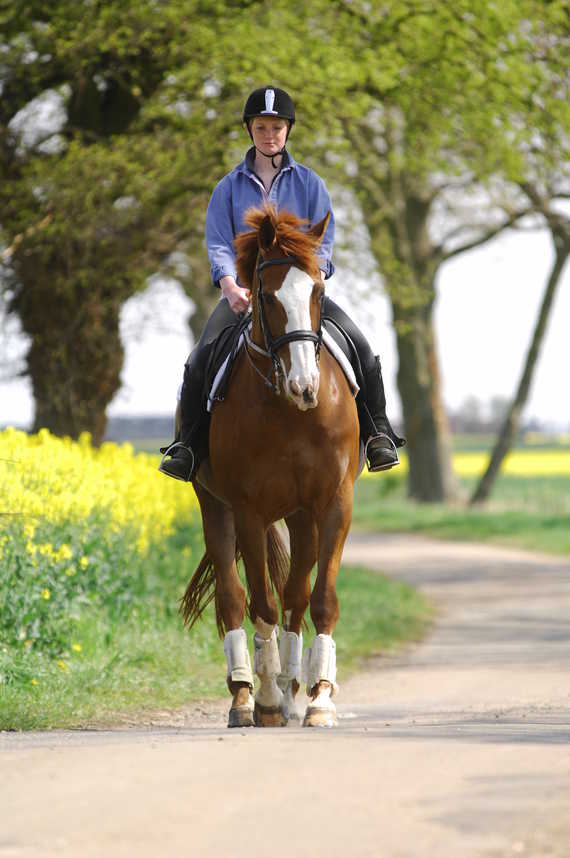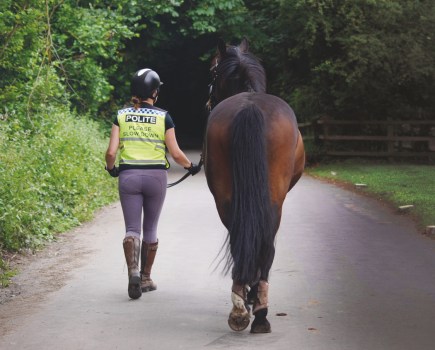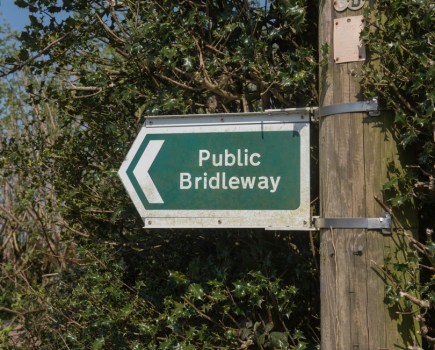If your horse refuses to stand while out hacking, it can not only be frustrating, but dangerous too, especially if you need to wait at a junction. Here, Jason Webb explains his tips for getting your horse to stand calmly.
A horse that fidgets can be a real pain, but in certain situations it can also be dangerous. Teaching your horse to stand still isn’t only about good manners, it’s a matter of safety.
Fidgeting and associated behaviour is generally driven by a horse’s desire to be away from their handler/rider, or by wanting to be somewhere else, usually back with their mates.
There are a number of reasons why horses may look to be elsewhere, but the main one is that their handler/rider isn’t able to stay calm, consistent and decisive (CCD).
Anyone who can remains CCD around their horse will do well and produce a calm horse.
Standing still isn’t just practical, it gives your horse time to absorb any new information. Once he can stand patiently, his ability to reflect, and therefore learn, is greatly increased.
Horses also have survival instincts, which play a part, although their extent will vary from horse to horse. The instinct most likely to create this behaviour is ‘herding’, and this drives a horse to seek out his mates for security and comfort.
When your horse has a strong desire to be somewhere else, a conflict will ensue. It’s this conflict that can create stubborn behaviour in some and fidgety behaviors in others.
Correcting this problem generally requires you to change, as a change in a horse starts with you.
Holding a horse is one of the main reasons he’ll become fidgety because it sets up an unrelenting pressure, also known as a trap.
This type of pressure will mean your horse will start to look for other options to alleviate it. It’s common for people who feel their horse wants to be somewhere else to hold them where they’d like them to be, creating conflict and the dreaded fidgety horse.
How to get your horse to stand still
Allow your horse to walk off for a step or two, pick up the reins and put him back where he was, before letting him go again. This says that walking off without you asking gets uncomfortable, while staying with you is much better.
If you repeat this enough times, your horse will make the decision to stay with you because it’s easier and more comfortable.
The beauty of this, and the reason it’ll stop your horse fidgeting, is that you’ve given him options that have different consequences, and as it’s his idea to stand still, there’s no conflict – so everyone is happy.
In cases where fidgeting has become a habit, you may need to release some of his energy by repeatedly disengaging his hind end. This involves stepping your horse’s hind legs across one another using one rein only.
This manages the fidgeting and, over time, helps solve the problem.









